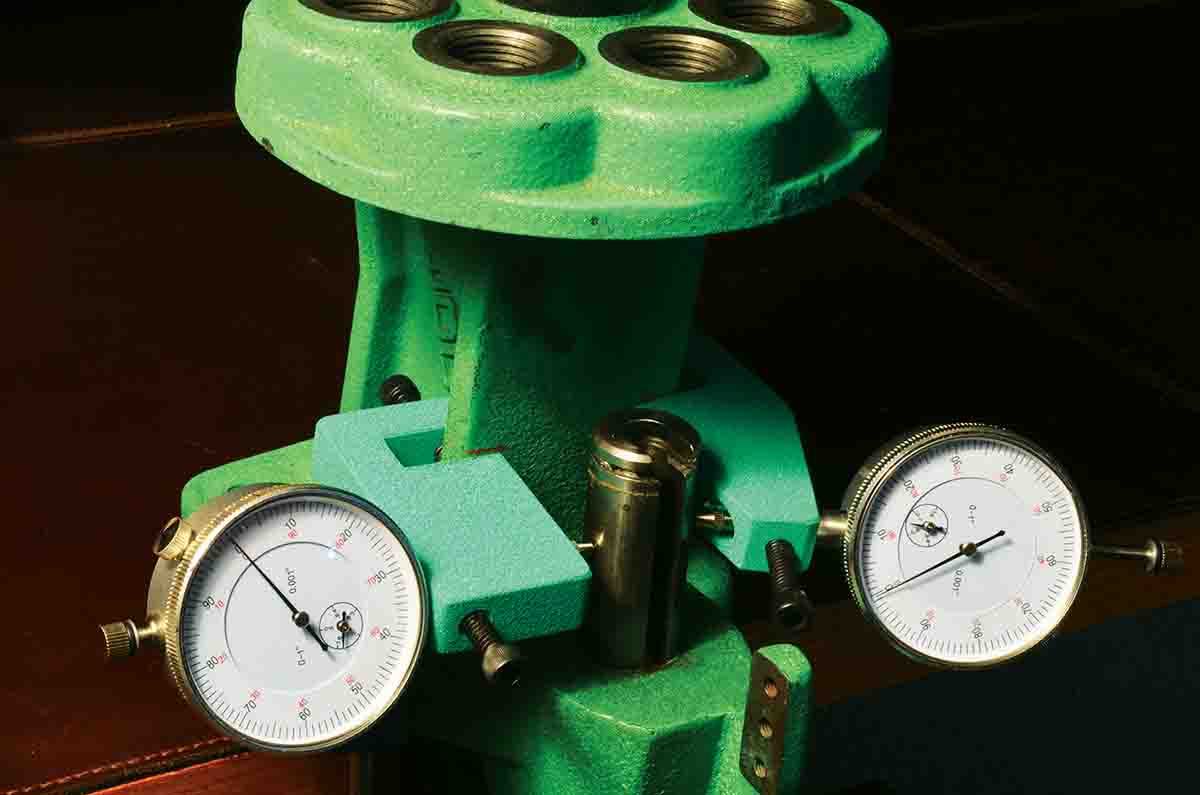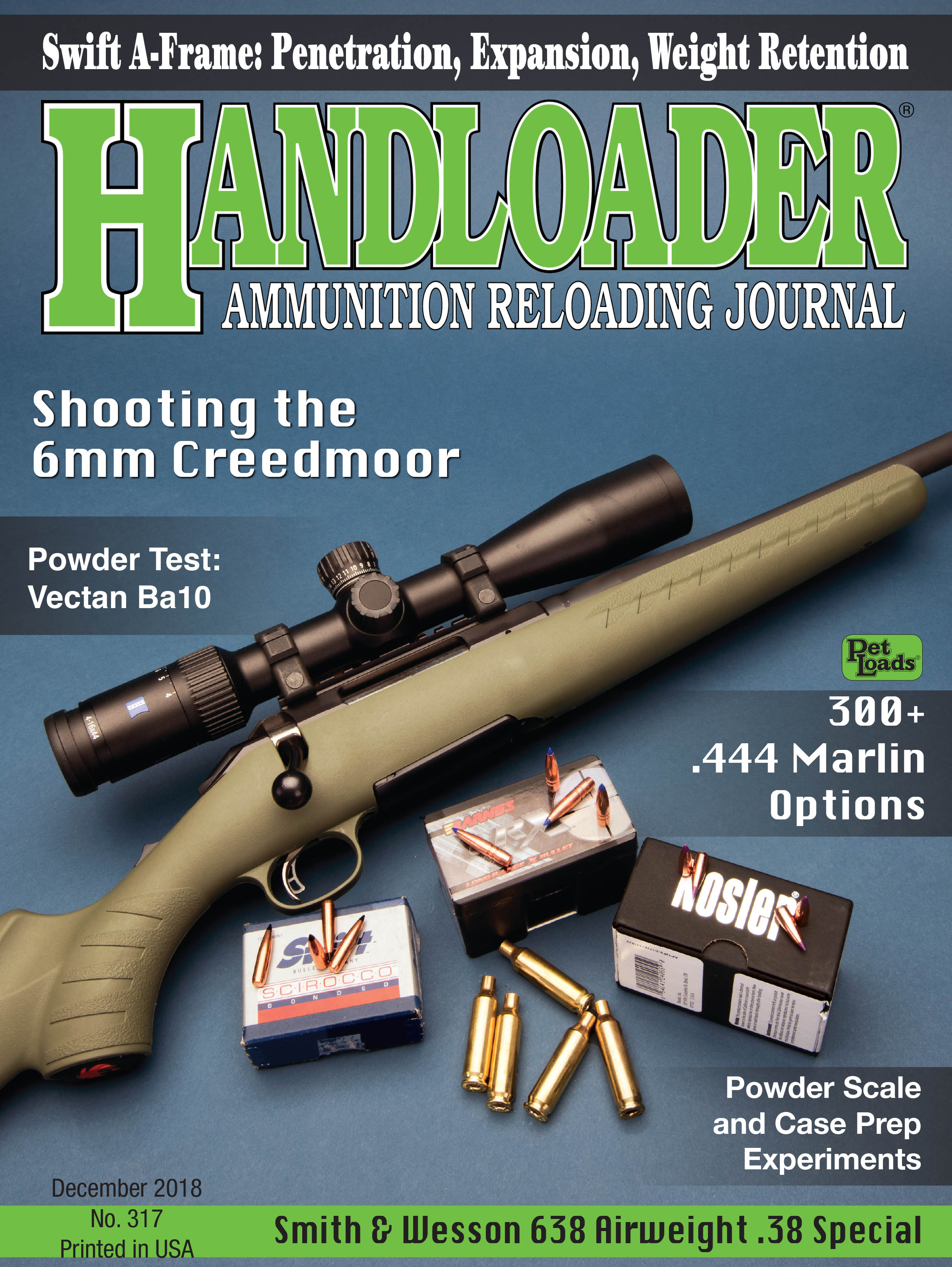In Range
Longevity and America's Manufacturing Genius
column By: Terry Wieland | December, 18
In the 1950s, writing in one of the English shooting magazines, Gough Thomas (G.T. Garwood) told of a Boss & Co. game gun that had been employed by Eley Brothers for routine cartridge testing.
Over the course of its lifetime, Garwood calculated, the gun had fired at least 1.5 million rounds. That is 1.5 million! The practice of Eley Brothers, in those far-off days before pressure barrels and electronic pressure gauges, was to pick a couple of rounds at random off the assembly line, walk out into the yard and fire a shot from each barrel. This was done shift after shift, week after week, year after year, testing every cartridge type Eley made. The gun was a standard Boss side-by-side, and it performed this task nonstop, for years, with nothing more than routine maintenance.
It was a tour de force of longevity and endurance, but hardly unusual for an English “best” gun. The secret of such extraordinary

In the U.S., guns especially noted for their longevity were the old single-barrel trap guns, where firing a quarter-million shots was not unusual, with some boasting of having fired twice that number. Like an English “best,” American trap guns were not merely an assembly of mass-produced parts bolted together. They were carefully hand-fitted and, in a game where thousands of pre-Depression dollars might ride on a single shot, dependability was prized above all.
Many modern writers think that Purdeys and Holland & Hollands, because of their grace and beauty, are somehow more delicate than American pumps and semiautomatics. In fact, the opposite is true. Mass-produced guns always have a higher break-down rate than top-quality handmade ones because of the necessity for generous tolerances to allow interchangeability of parts.
In modern mass-production, computerized CNC machines have reduced tolerances to previously unheard of levels – measured in microns rather than thousandths of an inch. Ironically, however, at the same time as mechanical goods are better made, and therefore should last longer, there is more chance of obsolescence through advancing technology.
The field of handloading equipment is a curious one because ancient presses and dies and such should still be perfectly usable today, provided they have not been abused or damaged. Yet a great deal of production of routine handloading implements has been moved to countries where manufacturing costs are lower. This reduces prices but also, almost inevitably, reduces quality and durability.
A few years ago I bought a vibrating case tumbler that broke down after about a year. It just quit working. I contacted the retailer, who promptly sent me a replacement, no questions asked. The store did not even want the defunct one returned. It was normal, they confided, and when it happened they just replaced it. It was not so much a case of planned obsolescence as acceptance of poor longevity in return for lower prices – the modern, Walmart induced psyche of cheap and disposable.
Since 1850, America has been known as a world leader in the manufacturing of machine tools. Lathes, milling machines and the like are used to produce other tools, machines and products. In the digital age, computer geeks may sneer at “metal bending” as a holdover from the dark ages of industrialization. As one who reacts to the smell of machine oil as others do to Chanel No. 5, I would point out that while a cartridge may well be designed on a computer, no computer ever produced a brass casing, a swaged bullet or a loaded round.
Real-life shooting uses real-life bullets, brass and gunpowder; it’s not a computer game. The tools used to produce these are made of steel. They chop, trim, cut and swage metal objects, and we get our hands dirty doing it. Handloading is one of the few remaining activities where you can make an investment in equipment with the reasonable expectation it will last a lifetime.
A while back, I was loading 20-gauge brass cases and needed a crimping tool to lock the mouth over the lead ball. Because of the size of the cases, this was no small thing. A friend made me a crimping tool that fits into a press, but it was so large that not even my Redding Ultramag would accept the die. We went down to one of the outbuildings on his property in Texas, dug through some accumulated farm equipment and came up with a dusty, grimy old Hollywood Jr. press of a type unseen since the 1950s. With a little cleaning and the judicious application of oil and grease, it was working like a charm inside an hour.
Now, if you think they don’t make them like that anymore, consider this: Redding is an American company that produces a range of loading presses, reloading dies for every conceivable cartridge, bullet moulds and a range of related tools and accessories. It takes great pride in the fact that its manufacturing is still done in the United States, to standards of quality that made America renowned for its machine tools in the good old days.
In 2002 Redding introduced a turret press called the T-7. It was so named because the rotating turret could accommodate seven dies, allowing permanent set-up for two or three different calibers. Sierra bought one of the very first ones and put it to work in its plant in Sedalia. As might be imagined, in the course of designing and testing bullets, Sierra loads an awful lot of ammunition. That Redding T-7 certainly earned its keep, turning out round after round for 15 years. Sierra calculated that, during that time, it had loaded more than one million rounds!
A loading press exerts serious pressure with every stroke of the handle, just as a gun endures tens of thousands of pounds pressure per square inch with every shot. As well, the press’ shaft, which is very closely fitted to ensure correct alignment, is subjected to friction with every stroke. Altogether, the life of a loading press is not an easy one, and a press used by a company like Sierra is required to behave heroically.
In a letter to Redding, Tommy Todd, Sierra’s chief ballistician, wrote, “I don’t know how many revolutions the turret on this press has turned.” A million? Two million? Who knows?
In 2017, Redding re-acquired the press from Sierra, fitted it out with two dial indicators to show how little run-out it displayed after all that work, and took it to several trade shows. To all appearances, that press could load another million rounds without losing one iota of its precision – and precision in a press is essential to precision in ammunition.
Another highly-respected name in the gun world is Brownells, and Brownells not only sells the Redding T-7, it’s the only turret press it recommends.
If memory serves, over the last 30 years I have used eight or nine presses made by five different manufacturers. Right now, my workhorse is a T-7, with an Ultramag for bigger stuff and the aforementioned Hollywood Jr. for really, really big cartridges. In all those years, I have not had a single Redding product either break down or fail to measure up. Others have, but never Redding.
According to Robin Sharpless, Redding’s executive vice president, when Sierra’s T-7 makes it back to Redding HQ, its destination is the company museum. As for the Boss game gun mentioned at the beginning, it disappeared somewhere along the line during one of the many consolidations of the British ammunition business. It would be nice to think that somewhere it is still grassing birds and breaking clays for someone. There is no reason it shouldn’t be.


